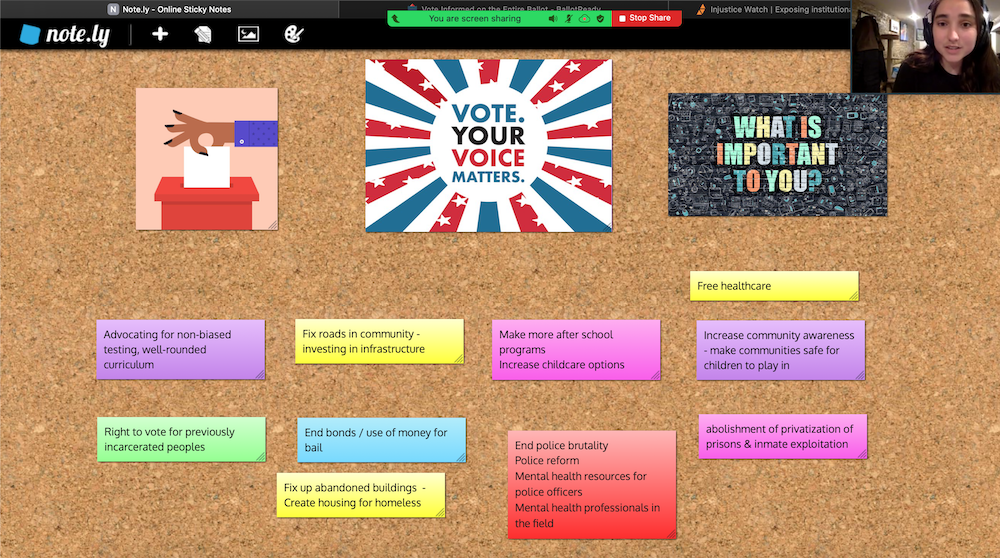The 2020 Presidential Election is the opportunity for the young people we work with to gain another critical life skill – participating in our democracy. The Storycatchers Changing Voices ensemble is gearing up to be the newest generation of voters. Voting for the first time can be daunting, so this year we’re taking the lead on all things ‘civic engagement,’ starting with workshops to discuss key issues and collimating with a group community service and voting day on October 29.
It’s been an exciting time preparing young voters, and there is absolutely no reason to keep our poll preparation processes a secret.
Here are our 6 tips for preparing a young first-time voter for success:
1. Answer the prompt – what voting issues are most important?
By writing out policy concerns young people have for themselves and their community, you’re creating a map to help guide them to candidates who have their best interests in mind. Here’s how we used a Note.ly board to track key issues and goals from our voting themed call with the Changing Voices ensemble.
2. Overcome an overwhelming judge retention list.
For the young people we work with, a judge with clear biases or a tough sentencing record can make or break their future. Resources like the Injustice Watch and the site for judicial evaluation information helped the Changing Voices ensemble members report on judges who require extra research, and they’re helpful for navigating the incredibly long list of judges on this year’s ballot.
3. Have them phone a friend!
The Changing Voices program staff schedules one-on-one meetings with each ensemble member to make sure they don’t have any outstanding questions about the voting process, and to complete a sample ballot. You can complete your own sample ballot to take to the polls or to use as a guide for the time you dedicate to completing your mail-in ballot.
4. Look beyond social media for election information.
We have incredibly enthusiastic young people voting this year. That being said, sometimes their enthusiasm has been stoked by social media alone. When we ran our key issues discussion, we talked about where folks are getting information and how to check your skills at identifying misleading news shared online. Did you pass the quiz? We’re also circulating this quick video can help you continue deciphering what’s what when it comes to election updates.
5. Never vote on an empty stomach!
In Chicago, you can compare a map of the polling places with a map of the city’s Black-owned restaurants. We did this for our upcoming voting day with the ensemble. It’s important to remember that every day you can also ‘vote’ with your dollar to help your community.
6. Have an in-person voting plan.
When preparing our day of civic engagement – including a community service project before taking to the polls – we looked at the facts: voting lines are long in many parts of the city and some polling places have better support than others. So, what did we do about this? We called Board of Election Commissioners to get updates on our polling place options.
“It’s a beautiful thing when you see democracy working the way it’s supposed to. But that requires your action in it – it’s not a sit-by sport, it requires some activity. So, as long as we remain active in it, it works. It’s not perfect, but as long as we start by doing this part (educating ourselves on the nominees and initiatives on the ballot), we can start to build towards what we really want our democracy to look like.” – Cristina Williams, Changing Voices Program Manager

